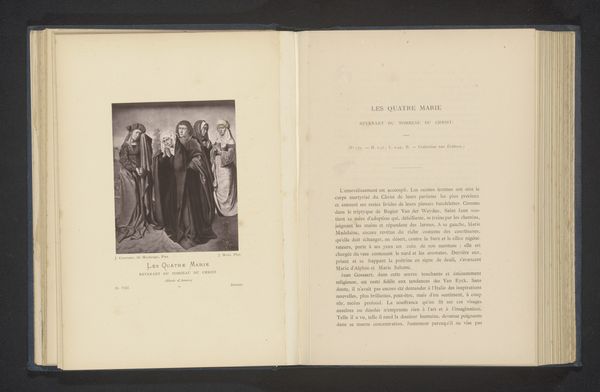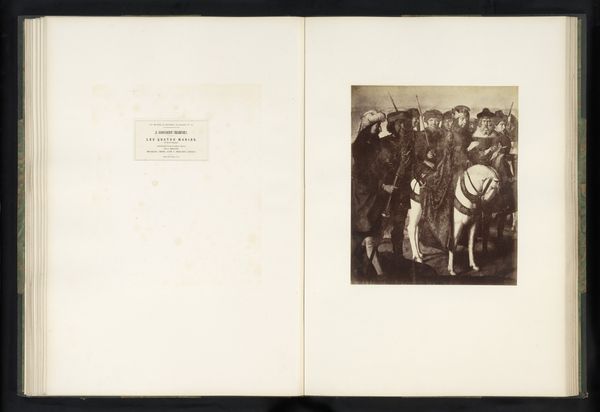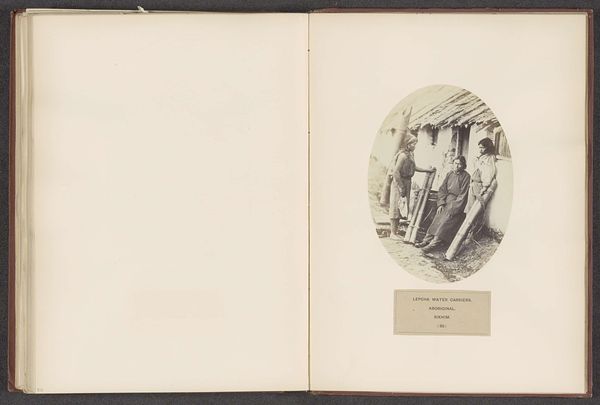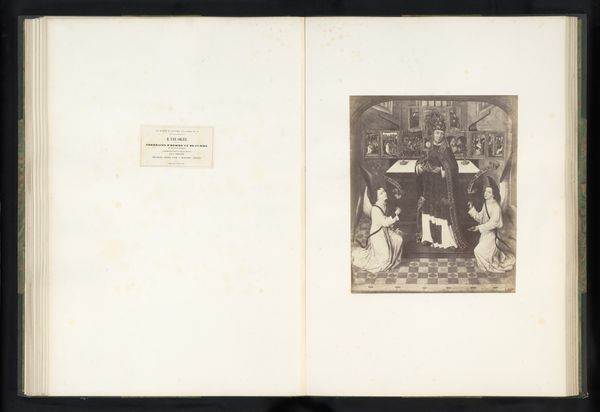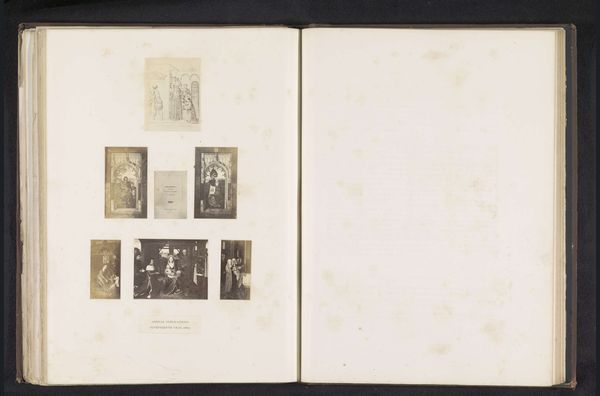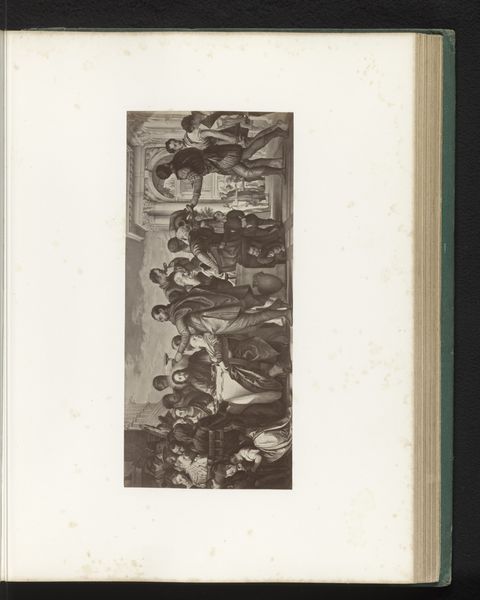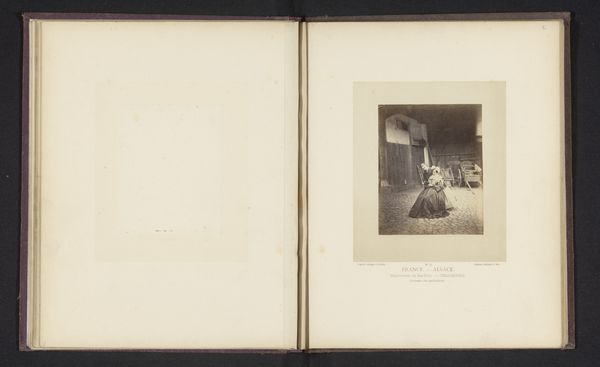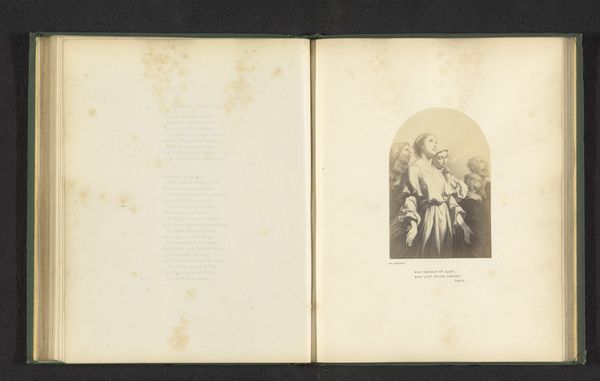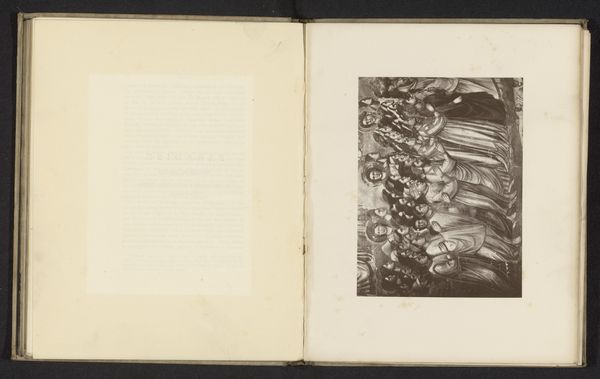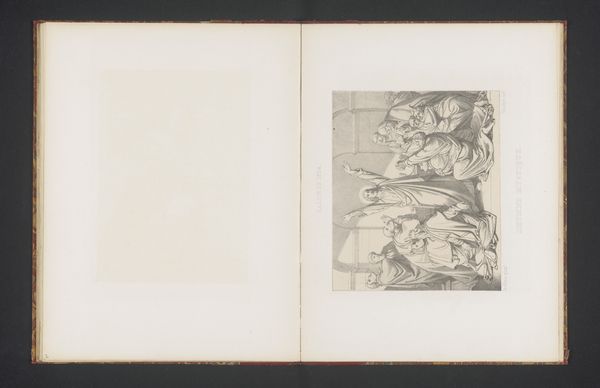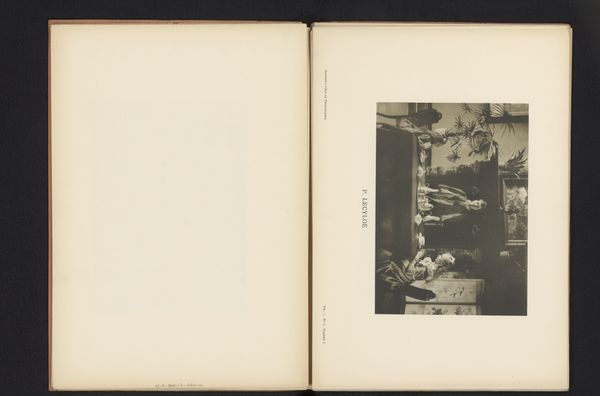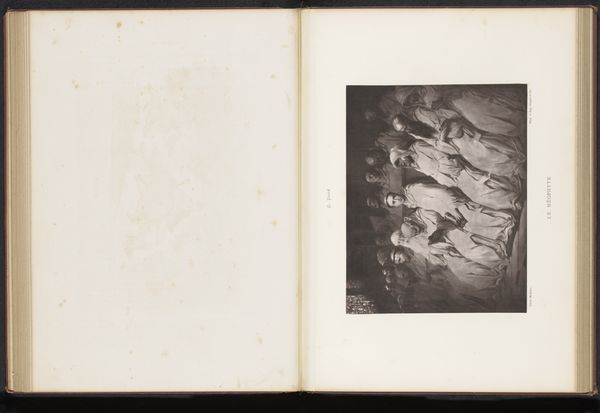
Fotoreproductie van De drie Maria's en de heiligen Johannes en Maria Magdalena door Jan Gossaert before 1861
0:00
0:00
print, photography
#
portrait
#
ink paper printed
# print
#
11_renaissance
#
photography
#
history-painting
#
northern-renaissance
Dimensions: height 358 mm, width 301 mm
Copyright: Rijks Museum: Open Domain
Curator: This photograph, taken before 1861 by Edmond Fierlants, captures a photorealistic rendering of “The Three Marys and Saints John and Mary Magdalene,” a piece originally created by Jan Gossaert. It exists as a print, a striking example of early photographic reproduction techniques aimed at disseminating art. Editor: My immediate response is one of somberness. There's a weightiness to their robes and downcast gazes, enhanced by the monochromatic palette. They seem trapped by grief or oppression of some kind. Curator: That’s a very astute reading. Consider that these depictions became widespread due to photography. Photography helped introduce many to art, as it reproduced, documented, and democratized access in ways previously unimagined. This kind of reproduction helped influence artistic trends, making Gossaert's emotionally charged figures accessible to a wider audience. Editor: Absolutely, the act of reproducing religious figures like the Three Marys is fascinating considering questions of power, agency, and visibility, which can impact cultural perceptions and collective identities. Seeing these figures through Fierlants' lens also brings to the forefront the very white European aesthetic that, at the time, dominated Western representations of holiness. Curator: That intersection between photographic reproduction and the distribution of a dominant European perspective on art raises significant questions about the politics of imagery. Think of the audiences it shaped! It simultaneously democratized art access and perpetuated certain cultural narratives. Editor: Yes, and also, that visual literacy wasn’t neutral. It reinforced colonial and patriarchal ideas of religious virtue at a time when photography, especially in Europe, was becoming enmeshed within projects of colonization and exploitation of women’s bodies. The aesthetics have consequences. Curator: A thought-provoking angle indeed. This image makes visible not only the figures depicted, but also the power structures inherent in artistic creation and distribution. It serves as a visual archive of social, cultural and political forces that have molded historical perceptions. Editor: The gravity in this old reproduction reflects more than mere aesthetics. It prompts inquiry into whose stories are privileged and how those visuals construct larger, sometimes insidious, cultural mythologies. The question that is really in the photograph here becomes ‘who were they, truly beyond the brushstroke and now, the chemical bath?'
Comments
No comments
Be the first to comment and join the conversation on the ultimate creative platform.
